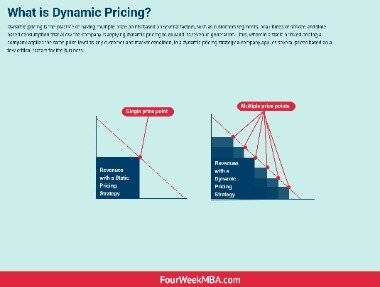
By following these seven steps, you can create a powerful and effective dashboard to help you make better decisions and improve your business outcomes. Now that you have the necessary data and inputs, it is time to build the actual dashboard. Start by setting up the structure using dashboard software or creating your own visuals from scratch.

It includes detailed information about current and past performance and projections for the future. This dashboard provides actionable insights and allows executives to review their company’s overall financial health quickly and make quick, informed business decisions. With the right dashboard, you can save time by automating tedious tasks such as budgeting, forecasting, and monitoring cash flow. You’ll also be able to gain insights into trends in spending or income so that you can adjust accordingly. And with powerful analytics capabilities, you’ll be able to identify opportunities for cost savings or increased revenue streams. Financial dashboards provide a quick and easy way to visualize key financial data and make informed decisions.
Profit and Loss Dashboard Examples and Templates
Using Power BI dashboards for financial purposes businesses to effectively monitor and manage their financial performance, identify trends, and take timely actions to drive success. These key insights will enable the finance team to analyze product performance, identify profitability patterns, and ensure proper inventory management. Power BI’s advanced features can significantly enhance financial dashboards by introducing custom calculations and measures, tailored visualizations, and pre-built solutions. Utilizing these tools can lead to deeper insights and more effective decision-making.
- We start with revenue, which is mainly influenced by selling price and number of units sold and is indicated without taking into account other expenditures or taxes.
- Track your revenue from the most popular financial management tools from our library of pre-built templates.
- It can help your team make better decisions about when to modernize your assets or when to replace them, or repurpose them.
- This kind of upkeep is often costly, not only in terms of money but also resources like time.
They should provide real-time insight into both the numbers and the stories behind them. These financial dashboard examples can uncover insights that help the entire business (not just finance) make smarter decisions. Starting at the bottom of the dashboard, we have the fixed and variable expenses breakdown charts. On the other hand, variable expenses refer to the production of goods or services and can vary from period to period depending on the production and sales levels. They include raw materials, research and development, sales commissions, shipping, utilities, and more.
Power BI Financial Dashboard Examples: Let’s Get Specific
It surfaces the numbers but fails to bring other business stakeholders into the financial conversation. In addition to a sales and marketing dashboard, you may want another financial dashboard specifically for pipeline analysis. This visualization will show you potential pipeline generation issues and granular insight into deal stages. First and foremost, the dashboard needs to provide an accurate baseline of the company’s plan (whether that’s a rolling forecast or traditional budget). That means breaking the data down to the department and account levels as necessary, like in the example below.
- A graphical dashboard displaying receivables data can provide valuable insights into an organization’s receivables status and cash position.
- Custom data visualization allows everyone to get personalized views, whether CFOs, CEOs or department managers.
- The right dashboards give your team the power to spot trends, opportunities, and growing problems, and effortlessly visualize large datasets.
- Power BI offers a range of tools and options to create dynamic and interactive financial dashboards that cater to your organization’s needs.
Access virtual user groups, find answers, and meet other finance professionals who use Tableau. This webinar explores the importance of visualizing finance data and showcases how Tableau’s office of finance crunches the numbers using the product. Director of Finance Analytics, Mike Crook shares how his team uses Tableau to tackle common pain points experienced by the office of finance. Find industry-standard metric definitions and choose from hundreds of pre-built metrics.
The key to building an effective financial dashboard is gathering data from various sources, organizing it into meaningful visualizations, and monitoring KPIs in real-time. With the right tools and resources, finance teams can quickly create powerful financial dashboards to make better decisions and drive the success of their company. The Profit and Loss dashboard provides a detailed view of the company’s financial performance over time. It includes an overview of the company’s revenues, expenses, gross profit, net income, and KPIs related to each. This dashboard allows finance teams to easily identify potential problems in their spending patterns and make necessary adjustments accordingly. A modern financial dashboard typically contains graphs, charts, tables, and other visualizations that provide an overview of the company’s financial health.
Why does my business need a dashboard for accounting?
Such data helps the finance team to evaluate service profitability, analyze cost allocations, and improve financial stability. Another useful Power BI sample for financial analysis is the Sales and Returns Dashboard. This interactive dashboard primarily focuses on tracking and analyzing sales data and return rates, which are vital to any retail and trademark office or e-commerce business. This sales dashboard typically includes key performance indicators (KPIs), such as sales, profit, and units sold. By combining properly prepared data, a well-structured data model, and engaging visualizations, you can create a powerful Power BI financial dashboard to improve your financial analysis capabilities.

Modern accounting dashboards are becoming increasingly reliant on technology, leveraging artificial intelligence (AI) and predictive analytics to forecast future business performance with unprecedented speed and accuracy. These new and emerging technologies are changing the market’s scope and range of functionality—and not only are vendors taking notice, buyers are too. According to a recent Software Advice survey, an overwhelming majority of respondents said they’d prefer an accounting solution with a corresponding mobile application.
Financial Dashboard
This could be anything from narrowing a search to department-specific KPIs to altering the analyzed time frame (e.g., going from a three-month overview to a year-over-year overview). The more interactive and customizable your dashboard is, the more relevant and consequential your insights will be. Explore finance dashboards designed to strategically enable data-driven decision making.
Use Your Industry Knowledge and Business Acumen to Design Optimal Dashboards
By having all the relevant metrics in one place, managers can identify potential problems quickly and develop strategies to improve key areas of their business. Additionally, finance dashboards can help companies improve their decision-making process by providing them with real-time data and insights into their business performance. Some of the most common types of finance dashboards are profit and loss statements, balance sheets, cash flows, budget trackers, and expense reports. Each type of dashboard focuses on a different aspect of business performance and provides detailed insights into different areas of your business. The Financial Performance dashboard provides a detailed view of the company’s business performance.
It is important to track trends in the CCC to be able to spot if the cycle is decreasing or increasing. A compact overview of these charts shows us that in the last 3 years, the company has been efficiently converted its investments, inventory, and resources into cash flows since the cash cycle steadily decreased over time. Once an organization realizes the potential an accounting dashboard puts at your fingertips, it may want to use it as a way to add data-based insights to its goal-setting and -achievement process. Using your accounting data analytics software, you can help guide them through the facets of the dashboard that can help them get where they need to be over a certain period of time. Power BI offers a range of tools and options to create dynamic and interactive financial dashboards that cater to your organization’s needs.
